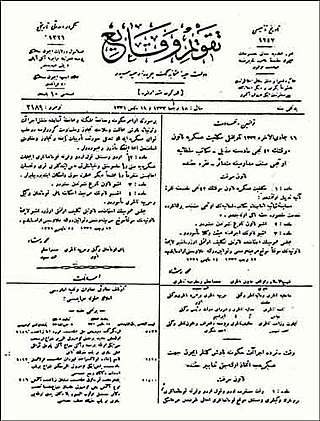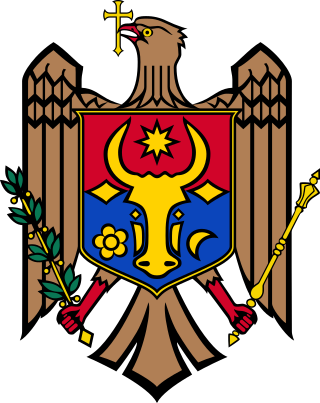
The World Intellectual Property Organization Copyright Treaty is an international treaty on copyright law adopted by the member states of the World Intellectual Property Organization (WIPO) in 1996. It provides additional protections for copyright to respond to advances in information technology since the formation of previous copyright treaties before it. As of August 2021, the treaty has 110 contracting parties. The WCT and WIPO Performances and Phonograms Treaty, are together termed WIPO "internet treaties".
The copyright law of the European Union is the copyright law applicable within the European Union. Copyright law is largely harmonized in the Union, although country to country differences exist. The body of law was implemented in the EU through a number of directives, which the member states need to enact into their national law. The main copyright directives are the Copyright Term Directive, the Information Society Directive and the Directive on Copyright in the Digital Single Market. Copyright in the Union is furthermore dependent on international conventions to which the European Union or their member states are part of, such as TRIPS Agreement or the Berne Convention.
The Copyright Act 1957 as amended governs the subject of copyright law in India. The Act is applicable from 21 January 1958. The history of copyright law in India can be traced back to its colonial era under the British Empire. The Copyright Act 1957 was the first post-independence copyright legislation in India and the law has been amended six times since 1957. The most recent amendment was in the year 2012, through the Copyright (Amendment) Act 2012.
Spanish copyright law governs copyright, that is the rights of authors of literary, artistic or scientific works, in Spain. It was first instituted by the Law of 10 January 1879, and, in its origins, was influenced by French copyright law and by the movement led by Victor Hugo for the international protection of literary and artistic works. As of 2006, the principal dispositions are contained in Book One of the Intellectual Property Law of 11 November 1987 as modified. A consolidated version of this law was approved by Royal Legislative Decree 1/1996 of 12 April 1996: unless otherwise stated, all references are to this law.

The Temporary Law of Deportation, also known as the Tehcir Law, or officially by the Republic of Turkey, the "Sevk ve İskân Kanunu" was a law passed by the Ottoman Council of Ministers on May 27, of 1915 authorizing the deportation of the Ottoman Empire's Armenian population. The resettlement campaign resulted in the deaths of anywhere between 800,000 and over 1,500,000 civilians, in what is commonly referred to as the Armenian genocide. The bill was officially enacted on June 1, 1915, and expired on February 8, 1916.
Copyright law in Azerbaijan governs copyright in Azerbaijan. The status of copyright law and its protection is regulated by the Law of the Republic of Azerbaijan signed in 1996. The Law on Copyright and Related Rights regulates the relations that arise while creating or using scientific and literary works, as well as works of art. According to this law, adjacent rights to performances, phonograms, and the transfer of broadcasting and cable broadcasting organizations are also streamlined. The Law was amended in 2001, 2002, 2004, 2005, 2008, 2010, 2013, 2017, 2018 and 2021.

Freedom of panorama (FOP) is a provision in the copyright laws of various jurisdictions that permits taking photographs and video footage and creating other images of buildings and sometimes sculptures and other art works which are permanently located in a public place, without infringing on any copyright that may otherwise subsist in such works, and the publishing of such images. Panorama freedom statutes or case law limit the right of the copyright owner to take action for breach of copyright against the creators and distributors of such images. It is an exception to the normal rule that the copyright owner has the exclusive right to authorize the creation and distribution of derivative works.
Since 2008 copyright in Afghanistan has been governed by the law on the support the right of authors, composers, artists and researchers.

The Berne Convention for the Protection of Literary and Artistic Works, usually known as the Berne Convention, was an international assembly held in 1886 in the Swiss city of Bern by ten European countries with the goal to agree on a set of legal principles for the protection of original work. They drafted and adopted a multi-party contract containing agreements for a uniform, border-crossing system that became known under the same name. Its rules have been updated many times since then. The treaty provides authors, musicians, poets, painters, and other creators with the means to control how their works are used, by whom, and on what terms. In some jurisdictions these type of rights are being referred to as copyright.
Limitations and exceptions to copyright are provisions, in local copyright law or the Berne Convention, which allow for copyrighted works to be used without a license from the copyright owner.
The copyright law of Chile is governed by Law No. 17,336, on Intellectual Property of October 2 of 1970 and subsequent amendments. It was implemented in the Decree No. 1122 of the Ministry of Education of Chile on May 17 of 1971.
Egyptian copyright law has evolved over time. The currently applicable legislation in Egypt with regard to copyright is Book Three of the Law on the Protection of Intellectual Property Rights 82 of 2002, which entered into force on 3 June 2002, the day following its publication in the Official Gazette. The implementing decree is Prime Ministerial Decree 497 of 2005.
The copyright law of South Africa governs copyright, the right to control the use and distribution of artistic and creative works, in the Republic of South Africa. It is embodied in the Copyright Act, 1978 and its various amendment acts, and administered by the Companies and Intellectual Property Commission in the Department of Trade and Industry. As of March 2019 a major amendment to the law in the Copyright Amendment Bill has been approved by the South African Parliament and is awaiting signature by the President.

The basic legal instrument governing copyright law in Sri Lanka is Part II of the Intellectual Property Act, No. 36 of 2003 replacing Part II of the Code of Intellectual Property Act, No. 52 of 1979.
Copyright law in Syria is regulated by the Copyright and Neighbouring Rights Law issued by Legislative Decree No. 62 of 2013. The Syrian Ministry of Culture, through its Copyright Office, is generally in charge of proposing copyright legislation to Parliament.
The Constitution of Azerbaijan generally recognizes the right to intellectual property (IP), and ensures the protection of IP rights of all persons. In order to clarify the norm of Constitution, and establish the legal basis of the protection of intellectual property rights, the parliament of Azerbaijan approved some laws, and ratified international agreements.
The Copyright law of El Salvador is legal rights to creative and artistic works under the laws of El Salvador. It was implemented in the Decree No. 604 of the Legislative Assembly of El Salvador on 16 of August 1993. This law aims to protect the economic and moral rights of Salvadoran authors and foreigners residing in El Salvador, granted by the mere fact of creating works that are literary, artistic and scientific.

The copyright law of Moldova regulates the copyright laws of Moldova. The first official decree related to copyright in the country was made on 25 November 1991, shortly after its independence on 27 August of the same year. On 25 May 1991, the State Agency on the Protection of Industrial Property (AGEPI) was created, making it the second copyright agency in the country together with the State Agency for Copyright (ADA). In 1993, Moldova signed an agreement on cooperation in the protection of copyright and the related rights between it and other countries, all members of the Commonwealth of Independent States (CIS), which only came into force in 1999. By the time of this year, Moldova had already created its official copyright law: Law No. 293-XIII, from 1994 but applied since 1995.







